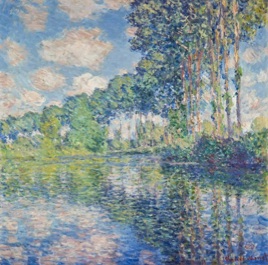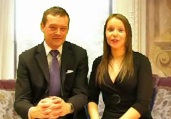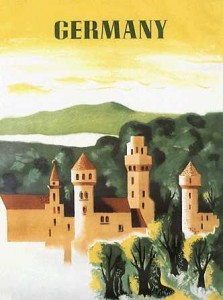

Glow Scotland blog
Imaginate’s step by step guide to evaluating the performing arts is now live and available via Glow. This interactive online resource has been designed through consultation with teachers and pupils from Whalsay Primary, Shetland and Busby Primary, East Renfrewshire as part of Imaginate’s Co-Create project.
Stevie Dante is a virtual theatre critic – he guides users through a range of activities intended to help them explore, evaluate and assess their experiences of live performance. His engaging personality, good looks and wit will ensure that both primary and secondary pupils and teachers will love using this resource.
Through the Co-Create project, pupils’ and teachers’ feedback, via a series of theatre visits, workshops and on-Glow activities, informed Imaginate’s development of the interactive resource, in partnership with Screenmedia, digital communications studio. The resource has now been launched nationally so that all teachers can use it. Imaginate’s aim now is that a new community of users will share their performance reviews via the project Glow Group.
The new resource aims to support teachers in meeting Curriculum for Excellence Expressive Arts Experiences and Outcomes across all levels, and encourages pupils to develop critical thinking skills and become more able to express their own thoughts, feelings and opinions with confidence whilst valuing those of others.
Co-Create is funded through a partnership between Learning and Teaching Scotland and the Creative Scotland National Lottery Fund.
More Tomorrow (31st March) on Glowing Thursdays we will be hosting a very different and very exciting Glow Meet with the National Gallery of Scotland.
Tomorrow (31st March) on Glowing Thursdays we will be hosting a very different and very exciting Glow Meet with the National Gallery of Scotland.
Using some of the most recognised Impressionist paintings in the National Gallery’s collection as inspiration; this will be a fun, hands-on practical session. Teachers will work with an artist experimenting with various techniques and approaches to mark making, drawing and painting in an impressionistic style. You will be actively encouraged to experiment and problem solve using whatever materials they have available in their classroom.
So why not join in and experiment as part of your CPD?!
If you haven’t signed up for this interactive event please do so now - you are running out of time!!
Sign up and join us at 4pm on the Glowing Thursdays page.
Internationally-recognised leader in the development of creativity, innovation and human resources, Sir Ken Robinson, spoke at the Royal Scottish Academy of Music and Drama, Glasgow, as part of his world tour and transmitted this via live stream on Glow.
The talk is available to watch online through Glow and the Creativity Portal now and for another month.
Sir Ken Robinson has been an advisor to governments in Europe, Asia and the USA, worked with international agencies, Fortune 500 companies and some of the world’s leading cultural organisations. In 1998, he led a national commission on creativity, education and the economy for the UK Government and was a central figure in developing a strategy for creative and economic development as part of the Northern Ireland peace process. Sir Ken was one of four international advisors to the Singapore Government for its strategy to become the creative hub of South East Asia and has received a number of honorary degrees and awards.
Creative Scotland, The Royal Scottish Academy of Music and Drama (RSAMD), The University of Glasgow and Glasgow School of Art collaborated to bring Sir Ken Robinson to Glasgow
MoreThe Twinning Project
The Twinning Project was devised and is being led by pupils who attend the Glow Club at Kemnay Academy in Aberdeenshire. The pupils hope that The Twinning Project will enable schools throughout Scotland to link-up and collaborate with other schools in a similar way to how cities, towns and villages in the UK twin with places in other countries.
The Twinning Project is featured on Glow Light to encourage schools across Scotland to contribute and benefit from this excellent collaborative opportunity. The Twinning Project Glow Group can be accessed via a link on the Glow National Site.
The following information was provided by the pupils at Kemnay Academy:
How to take part:
The twinning process is simple:
Step 1 - Register your school
Step 2 - Pick a school or schools to twin with
Who can you twin with?
The system has been set up so a school can have up to three twins. It is recommended that schools should consider twinning with:
· A school from their local network
· A school from their local authority
· Another Scottish school
Why should schools twin?
By signing up for The Twinning Project and linking with other schools who have done this you will be able to:
· share good practice
· share resources
· visit each other’s schools
· build relationships between schools
· encourage the use of Glow
· organise competitions between schools
· to use Glow Meet & Glow Chat
· make new friends
· share ideas
· use the new technologies to enhance learning
· encourage teachers to work together
· learn from one another
· become confident individuals, successful learners, responsible citizens and effective contributors
For more information visit the Glow group.
MoreRobert Burns
This is a photograph of W. G. Stevenson’s statue of Robert Burns in Kay Park, Kilmarnock. The statue dates from 1879. It now forms the centrepiece of the Burns Monument Centre.
The photograph was suplied by East Ayrshire Council.
Robert Burns (25 January 1759 – 21 July 1796) is also known as Rabbie Burns, Scotland’s favourite son, the Ploughman Poet, Robden of Solway Firth, the Bard of Ayrshire and in Scotland as simply The Bard. He was a Scottish poet and a lyricist. He is widely regarded as the national poet of Scotland, and is celebrated worldwide. He is the best known of the poets who have written in the Scots language, although much of his writing is also in English and a “light” Scots dialect, accessible to an audience beyond Scotland. He also wrote in standard English, and in these his political or civil commentary is often at its most blunt.
He is regarded as a pioneer of the Romantic movement, and after his death he became a great source of inspiration to the founders of both liberalism and socialism. A cultural icon in Scotland and among the Scottish Diaspora around the world, celebration of his life and work became almost a national charismatic cult during the 19th and 20th centuries, and his influence has long been strong on Scottish literature. In 2009 he was voted by the Scottish public as being the Greatest Scot, through a vote run by Scottish television channel STV.
As well as making original compositions, Burns also collected folk songs from across Scotland, often revising or adapting them. His song Auld Lang Syne is often sung at Hogmanay, the last day of the year, and Scots Wha Hae served for a long time as an unofficial national anthem of the country. Other poems and songs of Burns that remain well-known across the world today include A Red, Red Rose; A Man’s A Man for A’ That; To a Louse; To a Mouse; The Battle of Sherramuir; Tam o’ Shanter, and Ae Fond Kiss.
Text: Wikipedia
More Miss McGrow and Mr Billcliff from Head of Muir Primary School, Falkirk would like to welcome all teachers and children to the Royal Wedding Resource Centre, a collaborative National Glow Group for Early, First and Second levels. Secondary colleagues may also find some useful ideas here.
Miss McGrow and Mr Billcliff from Head of Muir Primary School, Falkirk would like to welcome all teachers and children to the Royal Wedding Resource Centre, a collaborative National Glow Group for Early, First and Second levels. Secondary colleagues may also find some useful ideas here.
William and Kate will be married on Friday 29th April 2011, an event sure to generate plenty of interest among all our pupils. At the Glow group you will find a variety of lesson outlines written for a Curriculum for Excellence Os & Es, starting points for research, wedding music, photos and lots of ideas for activities to share with your class.
We trust you will find something useful to take or adapt and we warmly welcome all contributions too!
Find out more about this exciting resource in the Royal Wedding Resource Centre.
More The energy sector is one of the fastest growing sectors in Scotland offering many exciting career opportunities for young people.
The energy sector is one of the fastest growing sectors in Scotland offering many exciting career opportunities for young people.
It is estimated that between 50,000 to 95,000 jobs will be created in the coming decade as Scotland realises its plans to become a world leader in wind, wave and tidal renewable technologies. In total, the transformation to a low carbon economy will create an estimated 120,000 jobs.
The oil and gas sectors continue to grow too and companies in this sector are looking to recruit 15,000 new employees in the next 5 years.
The potential for an exciting career in the energy sector is obvious and is set against the backdrop of the current financial crisis which has resulted in the some of the highest ever levels of youth unemployment.
Skills in science, technology, engineering and maths (STEM subjects) will be in greatest demand but there’ll also be the need for a host of other qualified personnel including electricians, plumbers, fabricators, human resources public relations specialists and receptionists.
Recruiting a sufficient number of people to the energy sector presents a serious challenge and many national strategies are being put in place to ensure that the right people with the right skills are in place at the right time.
Join this interactive Glow meet on Wednesday 23rd March from 2-3pm to find out more. Participants will have the opportunity to take part in challenges, ask questions and learn about the career paths taken by three individuals.
Sign up and join us in the World of Work Wednesdays National Glow Group.
NB we are using the new Glow Meet webpart for this event. It is straightforward to use and very similar to the Marratech. Why not give it a go and join us?!
 Instead of our usual Glowing Thursdays this week we are going to be hosting a live event from the Royal High School in Edinburgh highlighting the launch of resources developed by the Historical Institute Washington DC and made available through the Goethe-Institut, and Learning and Teaching Scotland to support German History and Culture.
Instead of our usual Glowing Thursdays this week we are going to be hosting a live event from the Royal High School in Edinburgh highlighting the launch of resources developed by the Historical Institute Washington DC and made available through the Goethe-Institut, and Learning and Teaching Scotland to support German History and Culture.
These resources have been selected by the German Historical Institute. They represent a comprehensive collection of original historical sources documenting German history from the Middle Ages to the present day, with particular focus on the period since 1945 to the crumbling of the Berlin Wall during the summer of 1989 and reunification. Within this period, East and West German examples are supplied in order to highlight their similarities and differences. The purpose of these resources is to encourage learners to exercise their intellectual curiosity, ideas and arguments about key issues relating to German history. They also attempt to present an awareness of events and developments, starting with international and domestic politics and extending to economic, social, and cultural issues. Developing cultural awareness is very important in attracting our young people to learning a modern language.
Many of the sources in this selection are difficult to locate in print publications, especially outside of Germany. All of the German language documents are accompanied by contemporary English translations, some of which were commissioned for this project. These resources also provide access to a range of significant visual images, many of which will be unfamiliar outside of Germany.
This part of the launch is aimed at the online audience consisting of teachers of history and German language and will include German Consul Herr Moessinger introducing the resource and there will be a live input via Glow from Dr. Kelly McCullough, Head of the project “German History in Documents and Images”, from the Historical Institute Washington DC.
So why not sign up and join us live at 3.40pm - 4.15pm to listen to Dr McCullough live from Washington DC and Herr Moessinger in the National Modern Languages Glow Group.
Please note that we will be using the new Glow Meet webpart for this event. It is much easier to access and it works in a similar way to the usual Glow Meet so why not give it a go?!
MoreWe have taken over the National Noticeboard for this year’s Comic Relief.
The National Glow Team are going to be doing ‘Something funny for money’ this Friday. We are also going to showcase our talented and generous schools by running Glow Meet all day on Friday. See our Comic Relief Glow Group for more details.
If your school is doing something funny for money sign up to a time slot and tell the nation all about it on Friday! Or alternatively reply to our forum sharing what your school is doing this Friday.
The Glow Team have not finalised everything that they will be doing on Friday - send us your ideas by posting below!
MoreGaudi Sunflowers
This week’s image is the winner of a competion held by Inverclyde Council.
Primary 5 pupils at Gourock Primary have been studying the work of Gaudi and loved his sunflower tiles. They used paint and oil pastels to represent the tiles.
Gaudi’s work is admired by architects around the World as being one of the most unique and distinctive architectural styles. His work has greatly influenced the face of the city of Barcelona, Spain and you will see Gaudi’s work all over the city.
Antoni Gaudi was born in Reus in 1852 and received his Architectural degree in 1878. From the very beginning his designs were different from those of his contemporaries.
Gaudi’s work was greatly influenced by forms of nature and this is reflected by the use of curved construction stones, twisted iron sculptures, and organic-like forms which are traits of Gaudi’s Barcelona architecture. Gaudi also adorned many of his buildings with coloured tiles arranged in mosaic patterns. This added another important dimension to his buildings which is so often overlooked by architects - the use of colour.
The combination of original design, interesting shaped stonework, and vibrant colours in Gaudi’s work give the viewer a truly breathtaking visual experience.
Gaidi’s most famous work is the still unfinished Sagrada Familia.
Image: Primary 5, Gourock Primary School, Inverclyde.
More
Find us on